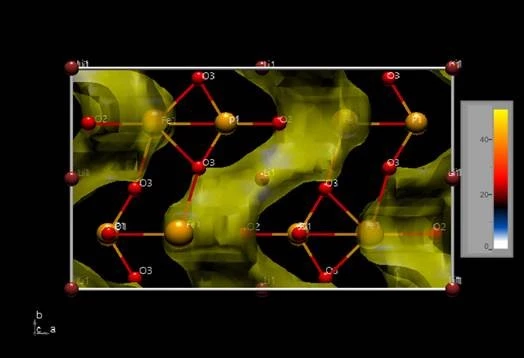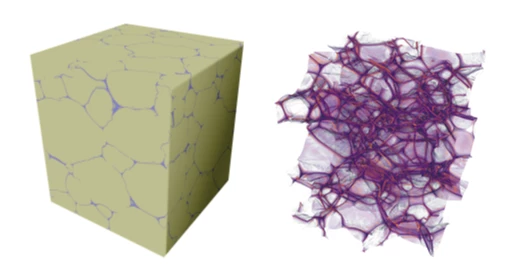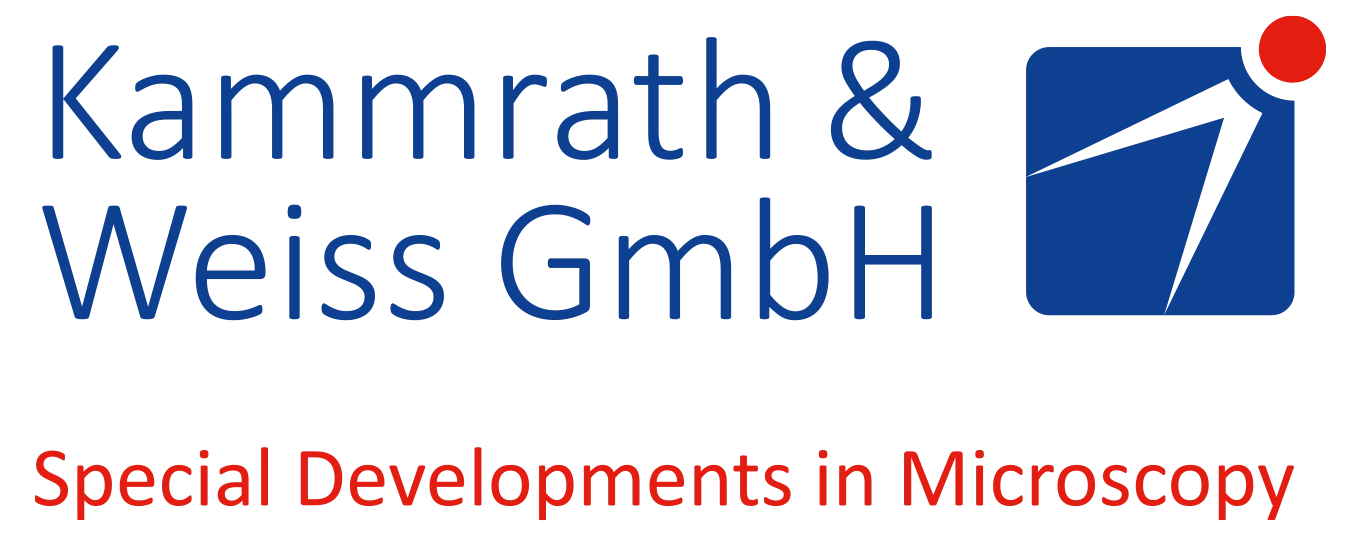Electromagnetic/Electric Fields in Ceramics Synthesis and Processing: Far from Equilibrium Effects
Electric and electromagnetic fields can promote far-from-equilibrium chemical reactions, phase transformations, and microstructural evolution. From an industrial standpoint, processing advanced materials using externally applied fields can have a smaller energy footprint compared to conventional methods, and as such will have a profound impact on society. The January, 2021 issue of MRS Bulletin visits some of the scientific questions that remain about the fundamental mechanisms underlying interactions of external fields with matter. More opportunities can present themselves as we expand our studies to various material systems.
This webinar will present three talks with authors from the MRS Bulletin issue. An interactive Q&A will be held with each of the speakers following their talks.
Talk presentations:
- Flash sintering: A new frontier in defect physics and materials science
Rishi Raj, University of Colorado
Talk begins at 5:24 - From Flash Sintering to Electric Field Effects on Grain Growth: Mechanisms Learnt from Studies of ZnO
Jian Luo, University of California, San Diego
Talk begins at 32:25
- Modeling of flash sintering of ionic ceramics
R. Edwin Garcia, Purdue University
Talk begins at 1:04:28
Recent Advances in FTIR Spectroscopy: Multi-range, Fast-Scan, Evolved Gas Analysis, and More
In this webinar, we discuss the fundamentals of FTIR spectroscopy and touch upon key application areas in the field of polymer chemistry, as well as learn about recent technological advances and platform modularity introduced with the new generation of FTIR instruments. This includes the fast-scanning capability and how this technique can provide valuable insights into reaction kinetics, mechanisms, and intermediate species. In addition, we will discuss new sampling accessories, such as an in-compartment, fully integrated thermogravimetric analysis module that allows for simultaneous analysis of weight-loss events and evolved gases due to thermal decomposition, making the FTIR more powerful than ever before. An interactive Q&A session follows the presentation.
Presented by PerkinElmer, Inc.
Solar Energy and the Circular Economy
The
significance of energy to social and economic well-being has been increasing
all around the world. Most of the energy demand is supplied by using fossil
fuels, which are dominant contributors to greenhouse gas (GHG) emissions
resulting in global warming and further climate change. The circular economy
(CE) is defined as a systems-level approach to economic development designed to
benefit businesses, society, and the environment. To tackle the climate crisis,
the Circular Economy (CE) offers an approach that is not only powered by
renewable energy, but also transforms the way products are designed and used.
In other words, the main aim of the CE is to scale up low-carbon and efficiency
solutions that will fulfill the Paris Agreement and the Sustainable Development
Goals (SDGs). Struggling climate change and energy transformation are main
challenges for a sustainable future. Thus, the policy makers take into accounts
both ambitious plans about climate and enable business-led solutions in order
to spread out and accelerate the implementation of the Paris Agreement.
The talks presented in this webinar represent work that was presented in a special section of MRS Energy & Sustainability. The talks include (i) renewable methods to produce hydrogen, which is touted as the future’s fuel and is an important feedstock for chemical industry, (ii) technologies to assist in the energy transition to the next century, (iii) renewable energy technologies particularly solar photovoltaics (PVs), which are expected to become the primary source for electricity in the next 10-15 years.
Each talk is followed by a Question and Answer session with that speaker.
TALK PRESENTATIONS
- Renewable methods to produce hydrogen, which is touted as the future's fuel and is an important feedstock for chemical industry
Kondo-Francois Aguey-Zinsou, University of New South Wales - Sydney
Talk begins at 10:10
- Technologies to assist in the energy transition to the next century
Volodymyr Krasnoholovets, Institute of Physics, National Academy of Sciences of Ukraine
Talk begins at 24:33
- How to avoid the perfect storm: the role of energy and photovoltaics
Maurizio Fermeglia, University of Trieste
Talk begins at 52:09
Vertically-aligned nanocomposite epitaxial thin films
Over the past two decades, new discoveries and major advances have been made in the synthesis of metal-oxide thin films and understanding their physical properties. Epitaxial vertically aligned nanocomposites (VANs) and their related architectures have shown many intriguing features that are not available from conventional two-dimensional planar multilayers and heterostructures. The February, 2021 issue of MRS Bulletin will discuss the ways in which VANs have become a unique platform to host different types of materials, such as oxide:oxide, oxide:metal, metal:nitride, and nitride:nitride, for achieving various functional and mechanical properties.
This webinar will present three talks with authors from the MRS Bulletin issue. An interactive Q&A will be held with each of the speakers following their talks.
Talk presentations:
- Tailoring Physical Functionalities of Complex Oxides by Vertically Aligned Nanocomposite Thin-Film Design
Jijie Huang, Sun Yat-sen University
Talk begins at 9:33
- Nanopillar Composite Electrodes for Solar-Driven Water Splitting
Mikk Lippmaa, University of Tokyo
Talk begins at 40:30
- Lithium-based Vertically Aligned Nanocomposites for 3D Solid-State Batteries
Mark Huijben, University of Twente
Talk begins at 1:07:48
X-ray Diffraction Measurements for Battery Research
This webinar will discuss X-ray diffraction and scattering techniques and how to apply them to battery research. Techniques to be discussed will include operando measurement, bond valence sum from Rietveld refinement and pair distribution function (PDF). We invite you to view this short video about the Rigaku SmartLab X-ray Diffractometer with intelligent guidance in advance of the webinar.

powder sample obtained from Rietveld refinement
program in SmartLab Studio-II software
Presented by Rigaku
Essentials of Getting Your Work Published
I've Done My Research, Now What?
Whether you are a student preparing to publish your first paper, an early-career researcher hoping to polish your publishing skills, or if you just have questions about the publishing process, then this interactive "how to" session is for you. Learn the fundamentals of successful scientific publishing from MRS journal Editors-in-Chief and other respected scientific journal professionals. Not only are they leading researchers in their field, but they share a dedication to high-quality content, editorial integrity and scientific scholarship.
This webinar features pre-recorded presentations followed by a live Q&A session with our panelists.
X-ray Computed Tomography for Soft Materials
This webinar will discuss basics of X-ray computed tomography and how to apply X-ray CT methods to soft materials. Additionally, we will show 3D imaging results for pharmaceuticals, foams, composites and other soft material.
We invite you to view this short video about the Rigaku nano3DX X-ray microscope for microtomography of large samples at high resolution in advance of the webinar.

In-Space Production Applications: Advanced Materials and Manufacturing on the International Space Station
The International Space Station (ISS) U.S. National Laboratory enables long-term, iterative studies within the unique, microgravity environment inside the ISS, including in-space materials research in the areas of advanced or exotic materials production. Access to persistent microgravity opens new opportunities for novel materials manufacturing, including unique microstructures, larger crystal growth, and potentially increased homogeneity. Please join us for a discussion of new research opportunities and current case studies of in-space production of advanced materials.
During this webinar, more questions were asked than time allowed for responses. The speakers have responded to those questions in written form, and those responses are available here.
Talk Presentations:
- Solidification of High Quality Magnesium Alloys in Microgravity
Prashant Kumta, University of Pittsburgh Swanson School of Engineering and School of Dental Medicine
Talk begins at 12:21
- Melt and Vapor Growth in the Solidification Using a Baffle in Sealed Ampoules (SUBSA) Furnace
Aleksandar Ostrogorsky, Illinois Institute of Technology
Talk begins at 31:46

Presented by International Space Station U.S. National Laboratory
Essentials of Book Publishing
Are you interested in learning more about the why, how and what of publishing a materials science book? Publishing a book is a powerful tool, allowing you to communicate your ideas to a global audience, building your reputation in the field and accelerating your career.
Join this webinar to hear from Springer Publishing Editors Charles Glaser, Christoph Baumann and Charlotte Hollingworth about the 5 easy stages in the publishing process and how they have helped many authors just like you, publish a book.
The new co-branded MRS-Springer materials science books series will also be introduced followed by a Q&A session to answer all your book publishing questions.
Recent developments in nanostructured metals and alloys
Nanostructured metals have been widely investigated due to their abundant interfaces (grain boundaries and phase boundaries) that can drastically impact the mechanical and physical properties of materials. The March, 2021 issue of MRS Bulletin highlights current research on nanometals, including gradient-structured metallic materials with high strength and ductility, deformability of hierarchical multiphase metallic nanocomposites, strategies to improve thermal stability of nanocrystalline metals, fatigue and fracture response of nanocrystalline and nanotwinned metals, and other breakthroughs that provide an in-depth understanding of the forefronts of the field.
This webinar will present three talks with authors from the MRS Bulletin issue. An interactive Q&A will be held with each of the speakers following their talks.
Talk Presentations:
- Heterostructured Nano Materials: New Science Produces Unprecedented Properties
Yuntian Zhu, City University of Hong Kong
Talk begins at 07:16
- Hierarchical and heterogeneous multiphase metallic nanomaterials and laminates
Nathan Mara, University of Minnesota-Twin Cities
Talk begins at 38:57
- Fatigue and Fracture of nanostructured metal and alloys
Brad Boyce, Sandia National Lab
Talk begins at 1:05:00
Sponsored by Kammrath & Weiss and Rigaku



